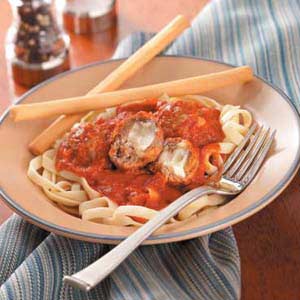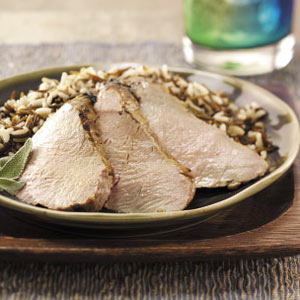Sauerkraut with dill is a traditional German dish made from fermented cabbage, dill, and spices. It is a tangy and flavorful dish that is often served as a side dish or condiment. The fermentation process gives sauerkraut its characteristic sour flavor, while the dill adds a fresh, herbaceous note. Sauerkraut is also a good source of probiotics, which are beneficial bacteria that can help to improve gut health.
This article provides two recipes for sauerkraut with dill. The first recipe is a traditional German recipe that uses white cabbage, juniper berries, and caraway seeds. The second recipe is a more modern take on sauerkraut that uses red cabbage and apples. Both recipes are easy to follow and can be made with simple ingredients.
Whether you are a fan of traditional German cuisine or are looking for a new and healthy side dish, sauerkraut with dill is a great option. This article provides all the information you need to make this delicious and nutritious dish at home.
DILLY DELIGHT SAUERKRAUT

FERMENTATION LENGTH: 1-4 weeksSALT PERCENT: 2%Why I love this recipe. Dilly Delight Sauerkraut always brings back memories of my first fermentation experiences. This was the only flavor of sauerkraut my family ate for over a year. I had purchased my first crock and on each new moon would layer in the cabbage, salt and dill, mix well, pound, cover and wait. Sometimes, connecting a task to nature's rhythms makes it easier to get the task done. Feel free to cut back on the amount of dill used, though I like the strong pronounced flavor. For a PDF version of this recipe, including Gourmet Pairing Options, scroll to the end of this post.
Provided by Holly Howe
Categories Appetizer Condiment Side Dish
Number Of Ingredients 3
Steps:
- SET UP. Gather Supplies and Set Up ScaleUsing a scale to make your sauerkraut enables you to make up a batch that fits perfectly into your jar and also ensures that you use the right amount of salt for the bacteria to do their best work. You don't want to include the weight of your bowl in your measurements, so either zero out the scale (usually done with a button on a digital scale or a knob under the tray on a mechanical scale) or write down the weight of your bowl (tare).
- CHOP. Prep Your Vegetables and CabbageSprinkle 1 tablespoon dried dill into your bowl. Now, how simple is that?Discard the limp outer leaves of the cabbage, setting aside one of the cleaner ones for use during the SUBMERGE step.Quarter, then slice cabbage crosswise into thin ribbons. I leave the core in because I find it helps to hold the layers of cabbage together making the slicing job easier. There are many ways to slice that cabbage as reviewed in this post.Add sliced cabbage to your bowl until weight of dill and cabbage is 1¾ pounds (28 ounces, 800 grams).
- SALT. Create Your BrineSalt pulls water out of the cabbage and vegetables to create an environment where the good bacteria (mainly lactobacillus) can grow and proliferate and the bad bacteria die off.Sprinkle cabbage with 1 tablespoon of salt and mix well. Then, massage the cabbage with strong hands until moist, creating the brine. You should be able to tilt the bowl to the side and see a good-sized puddle of brine, about 2-3 inches in diameter. This process can take anywhere from 2 to 5 minutes.
- PACK. Pack Mixture into JarOnce you have a small puddle of brine it is time to pack the mixture into your jar. Grab handfuls of the salty, juicy cabbage mixture and pack them into your quart-sized wide-mouth canning jar, periodically pressing the mixture down tightly with your fist or a large spoon so that the brine rises above the top of the mixture and no air pockets remain.Be sure to leave at lease 1 inch of space between the top of the cabbage and the top of the jar. Because we weighed out just the right amount of cabbage to fit in your jar, this should happen automatically.Pour any brine left in your mixing bowl into the jar and scrape out any loose bits stuck to the sides of the bowl or to the side of your jar.
- SUBMERGE. Hold Ferment Below BrineNow make sure your fermenting mixture is in a safe anaerobic (no air) environment. This means that you need to keep the cabbage mixture submerged in the brine while it ferments. Take that cabbage leaf you during the SETUP step, tear it down to just fit in the jar, and place it over the surface of the packed cabbage. Forgot to save a cabbage leaf? No problem. You can fold a narrow piece of parchment paper to size or even cut an old plastic lid to size. Place the 4-ounce jelly jar on top of the cabbage leaf, right side up with its lid removed. Lightly (to allow for escape of CO2 gases), screw on the white plastic storage lid.I like to label my jars using green or blue painter's tape and a permanent marker. I note the flavor of sauerkraut I made and the date I started fermenting.
- FERMENT. Ferment for 1 to 4 WeeksTime now for the friendly bacteria to do their work while you watch and wait. Can you wait 7 days to taste the tangy crunch?In this image, you see the Kraut Source Fermentation Lid in use. See my review here.Place your jar of fermenting sauerkraut in a shallow bowl (to catch the brine that may leak out during the first week of fermentation), out of direct sunlight. Wait for 1 week before opening to sample.For what to expect as your sauerkraut ferments, see SALTY Cabbage to SOUR Sauerkraut: Fermentation Signs to MonitorShould the brine level fall (very unlikely) and remain below the level of the sauerkraut during this first week, dilute 1 Tbsp of salt in 2 cups of water and pour some of this brine over the sauerkraut (removing the little jar first) until it just covers the mixture. Put the little jar back in, screw the lid on lightly and let the fermentation continue.Don't worry if the brine disappears after the 7- to 10-day mark. By this time, you've created a safe environment in which the bacteria that would cause mold or slime has been chased away by the beneficial bacteria produced during the fermentation process.You can ferment your sauerkraut for up to 4 weeks. The longer you ferment it, the greater the number and variety of beneficial bacteria that can be produced. One study shows bacteria levels peaking on day 21.
- STORE. Store in Refrigerator for Up to 1 YearAfter fermenting your sauerkraut, it's ready to go into the refrigerator and ready to be eaten. Rinse off the outside of the jar. You can take the little jar out. Clean the rim if necessary (sometimes it can get sticky from the brine that overflows), and screw the lid back on tightly. Add to your label how long you fermented the contents.Enjoy a forkful or two of your sauerkraut with your meals. It will continue to ferment - aging like a fine wine - but at a much slower rate that before. If the flavors are too intense, leave it the jar for a month or two and then eat it. You will be amazed at how the flavors have changed.If successfully fermented (tastes and smells good), your sauerkraut can be kept preserved in your refrigerator for up to a year.
EASY DILL SAUERKRAUT

Easy dill sauerkraut recipe is a great addition to any meal!
Provided by TheWildGut.com
Categories Side Dish
Time 30m
Number Of Ingredients 3
Steps:
- Prep the napa cabbage by rinsing away any visible dirt, removing the outer leaves and trimming off the stem. Set leaves and stem aside for later.
- Shred the napa cabbage.
- Place half of the cabbage in a large bowl or pot and add half of the salt. Massage the cabbage until it begins to sweat. Add the remaining cabbage and salt and then repeat the massaging process.
- Roughly chop the dill.
- Add the dill to your cabbage and mix to combine.
- Pack your jar with the cabbage and dill mixture. Leave about 1-2" of head space.
- Place fermenting weight or outer leaves and stem on top to be sure everything is submerged in brine.
- Cap or place an airlock device on jar and leave sit at room temperature for 3-4 weeks.
EASY DILL PICKLE SAUERKRAUT RECIPE
This kraut tastes just like your favorite dill pickle but without all that vinegar. It's also so simple to make with fresh dill, or dried dill from the summer harvest.
Categories Healthy Recipes
Time P7DT20m
Number Of Ingredients 4
Steps:
- Finely chop washed, green cabbage.
- In a large bowl, put down a hearty layer of chopped cabbage and a generous sprinkling of sea salt (about 1 Tbsp.)
- Add half the garlic and dill, sprinkling around the cabbage layer.
- Continue adding layers of cabbage and sprinklings of salt until you run out of cabbage.
- Add the rest of the garlic and dill to the last cabbage layer.
- Mix ingredients with clean hands or a large spoon.
- Allow the cabbage to sit for ten minutes so the salt can pull some moisture out of the cabbage and tenderize it.
- Pound the cabbage thoroughly with a kraut pounder or any flat, wooden instrument. Be careful not to bang the sides of your bowl.
- Funnel the mixture into a half gallon glass jar, or a fermenting crock.
- Continue to pound each layer and keep pounding until the resulting liquid has covered the cabbage.*
Tips:
- Use a sharp knife to thinly slice the cabbage. This will help the sauerkraut ferment evenly.
- Add plenty of salt to the cabbage. This will help to draw out the water and create a brine, which will inhibit the growth of harmful bacteria.
- Pack the sauerkraut tightly into a clean glass jar. This will help to keep the sauerkraut submerged in the brine and prevent it from spoiling.
- Cover the jar with a lid and place it in a cool, dark place. The ideal temperature for fermenting sauerkraut is between 65 and 75 degrees Fahrenheit.
- Let the sauerkraut ferment for at least 2 weeks before eating it. The longer you ferment the sauerkraut, the more sour it will become.
- Once the sauerkraut is fermented, you can store it in the refrigerator for up to 6 months.
Conclusion:
Making sauerkraut with dill is a simple and rewarding process. With a little time and effort, you can enjoy this delicious and nutritious food at home. Whether you use it as a condiment, a side dish, or an ingredient in other dishes, sauerkraut is a versatile and flavorful addition to any meal. So next time you're looking for a healthy and delicious way to add some probiotics to your diet, give sauerkraut a try!
Are you curently on diet or you just want to control your food's nutritions, ingredients? We will help you find recipes by cooking method, nutrition, ingredients...
Check it out »
#weeknight #time-to-make #course #main-ingredient #cuisine #preparation #low-protein #healthy #5-ingredients-or-less #vegetables #1-day-or-more #easy #european #low-fat #dietary #low-sodium #low-cholesterol #low-saturated-fat #low-calorie #low-carb #healthy-2 #low-in-something #number-of-servings
You'll also love










